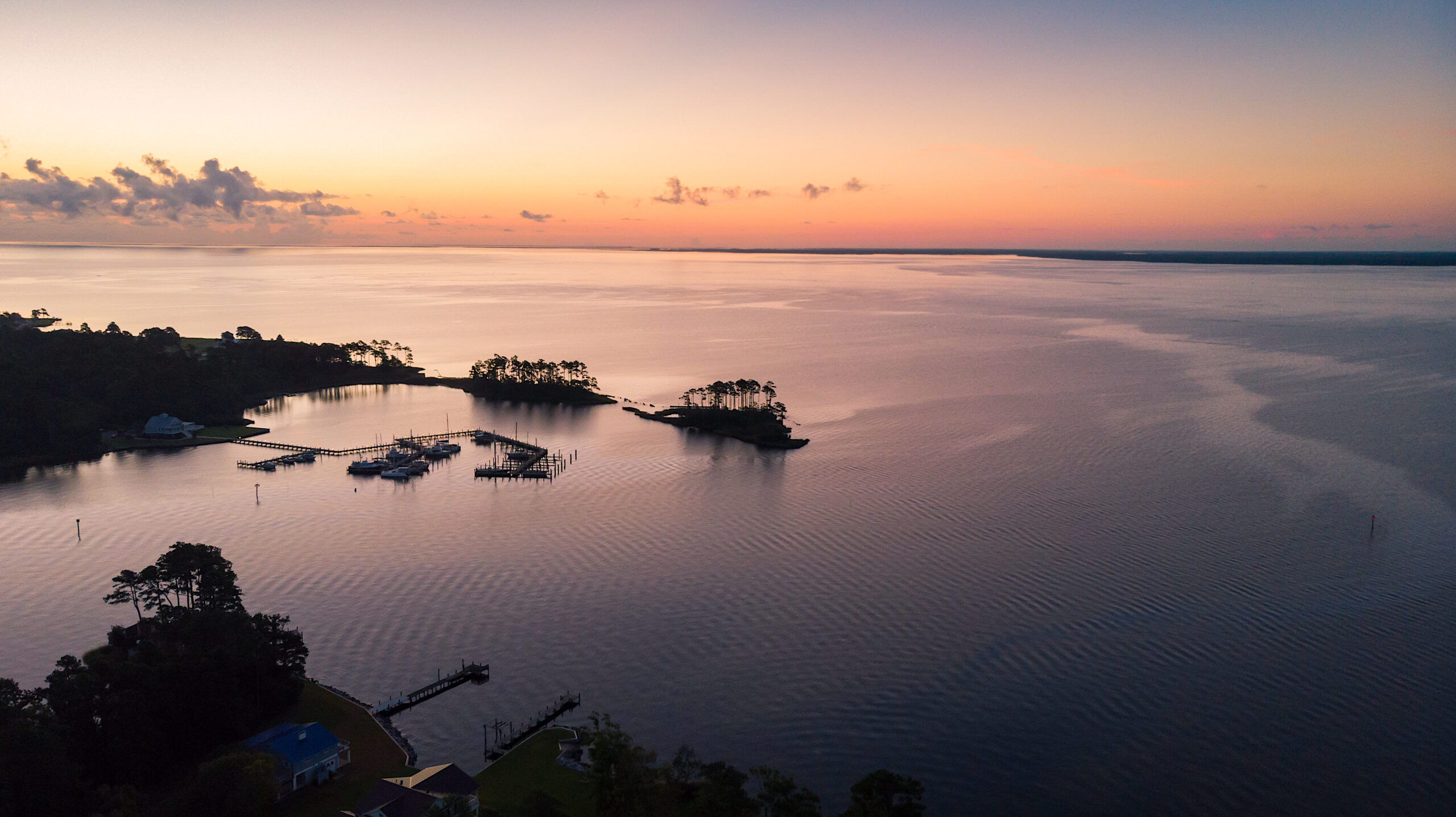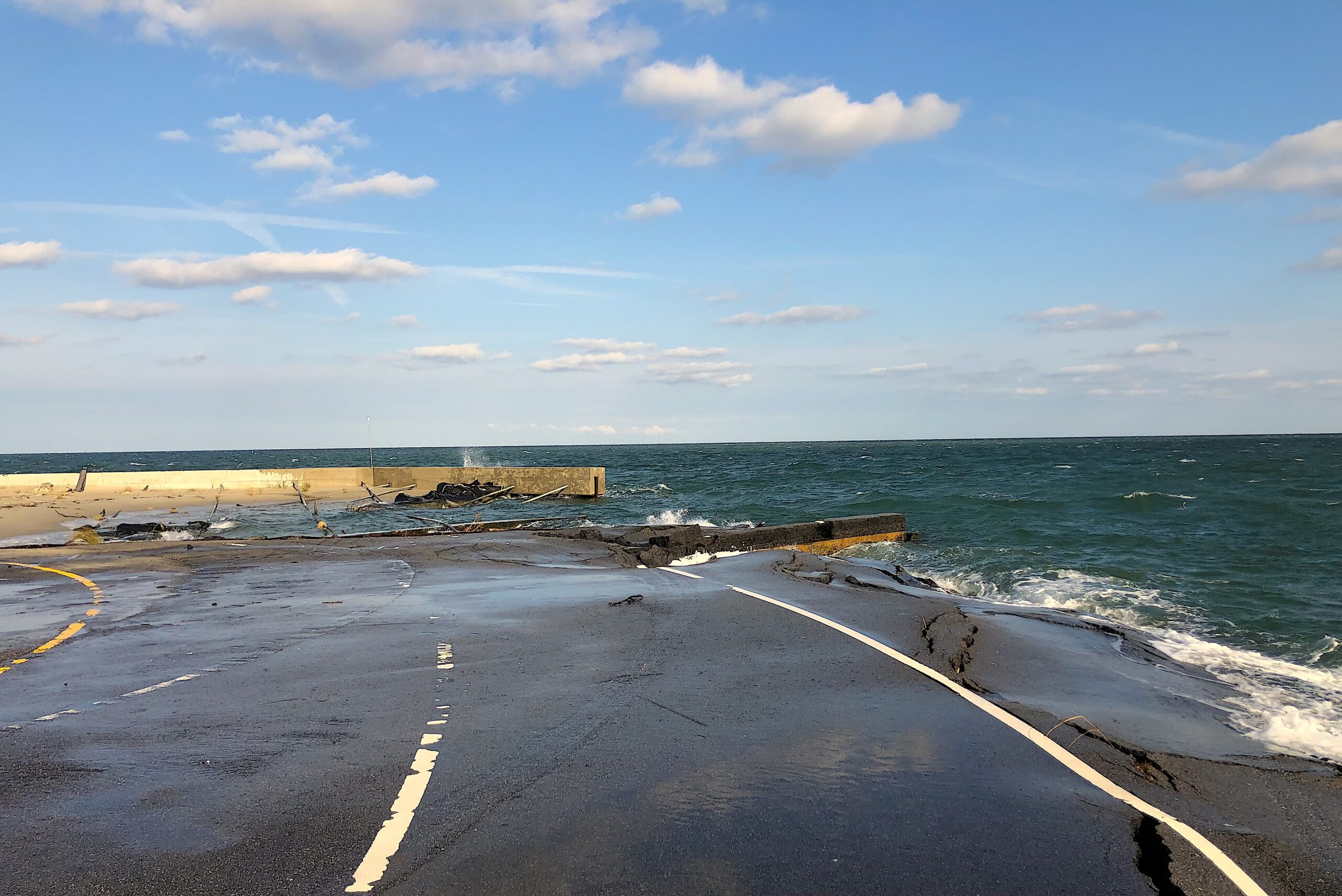Crossing the Mighty Neuse
“That boat’ll take more than you will!”
-- Cap’n Jim Rumfelt

Photo credit: Eifel Kreutz.
The relatively heavy rain over at Oriental had been sitting back up Smith Creek, back beyond the bridge, as we crossed the Neuse that Friday afternoon pretty easily on a 290-degree course from the mouth of South River. But the storm then came forward and met us a couple hundred yards still out in the river and poured its cold October rain steadily as we motored up the harbor to the marina there, docked and then re-docked with spring lines a few slips from the one we first pulled into.
The next morning dawned still and clear, reaching 60 degrees just after ten, and we knew we would be layering up for our reverse crossing: a course of about 110 back over to South River, Garbacon Creek, and the long sandy beach between that creek and Turnagain Bay.
Clear though the morning remained, still it did not. A north wind had picked up to 15 and more, and with the force of that moderate, freshening breeze coming upriver, the Neuse had kicked up with it. Just out of the harbor and the mouth of the creek, the waves did not look like too much. But a quarter mile out, they were over a foot and growing as we set a southeast course.
Soon we were in close to two-foot waves, and we were banging the Simmons Sea Skiff, quartering into cresting whitecaps. The boat could take it — the high-prow Simmons skiffs were meant to bust through inlets — yet we clearly would be soaked if we kept slamming thisaway. I came off that course and tried a few quarterings (more like eighthings), but the skiff heeled too much in the troughs. So that was not the way for the day, either.
“I think we’d better go with the waves,” I called to fellow boater Bill Garlick of Marshallberg, and he nodded assuredly at once, as did my wife Ann, standing between us.
Now we were in the position of dealing with following seas and surfing, as the waves crested, so I upped the power to give us more control as the waters sped up and then relaxed, and, careful not to outrun the waves, we managed better than not on this new course and in this new mode.
There being no lee to get under, we maintained a course of about 230, which steadily brought us toward the south shore of the Neuse about midway between Adams Creek and Great Neck Point. North of the mouth of Adams Creek, we pulled around to port and soon ran east along the shore, but the banging and slamming was still just too insistent, too much. We decided against continuing that for 10 miles and for a couple of hours or so, opting instead for the Intracoastal Waterway, Core Creek, the Newport River, and Beaufort, and then through the Straits north of Harkers Island to return us to Bill’s dock at Marshallberg instead.
***
The day before had held no tests like this one. Close to flat coming up Core Sound to Nelson’s Bay, and then the protected waters of Salter’s Creek and the cut from its headwaters up to Golden Creek and southern Long Bay, light wind, just breezes really, on up to and through the Old Indian Ditch and north down Turnagain Bay to its mouth with the Neuse. No real waves to contend with, and our eyes went to the huge rainclouds on the north shore of the Neuse well east of Oriental, and lesser ones over the lands beyond Oriental harbor, giving us that cloudy but clear crossing till the rain at the end.
Today, though, here comes the sun, yet with it a healthy north wind — and a very worthy craft, sharp-prowed, high-sided, plenty of weight in her, highly responsive, and a skipper relying on other, similar experience, recalling the following seas of similar size out in our Whaler 17 on Core Sound one cloudy summer’s day between Wilbur’s Camp and Don & Katy Morris’s marina at Atlantic, of which Cap’n Jim Rumfelt later said,
“That boat’ll take more than you will!”
And of course, I remembered coming around Maw Point from Bay River into the Neuse, bound for Oriental with 14-year-old son Hunter in the same 17-foot Whaler back in 1999. Banging on the Neuse against lesser waves than these, it still took hours against a southwest wind, running the boat’s engine at 3600 rpm, to reach the little sail-boating town.
So with both similar recalled experiences and with intuitions in the moment as we rode across the Neuse that October day, in my heart and mind, in the way my balance felt as the waters pushed and ran under us, and we over them, I kept asking,
What does the boat want to do?
Where does it feel best, when does it feel right?
Find that, know that, I felt, and the measure of the moment — and of the piloting — would be keen enough.
And so it was.
As Granddaddy Page, who was once pulled offshore in a skiff by one tide and brought back in by the next, used to say to me:
“The water is your friend, son, if you let it be.”
MORE
- Out at Hatteras: With Cap’n Ernie Foster and Albatross I
- “This Wet and Water Loving Land”
- Ghost Ship of Diamond Shoals: The Mystery of the Carroll A. Deering
- Two Captains from Carolina: Moses Grandy, John Newland Maffitt, and the Coming of the Civil War
- books by Bland Simpson
Bland Simpson, North Carolina’s oft-honored voice of our state’s coast, is Kenan Distinguished Professor of English and Creative Writing at the University of North Carolina at Chapel Hill. He also is pianist for the Red Clay Ramblers, the Tony Award-winning string band, and has collaborated on such musicals as Diamond Studs, Fool Moon, Kudzu, and King Mackerel & The Blues Are Running.
- Categories:


